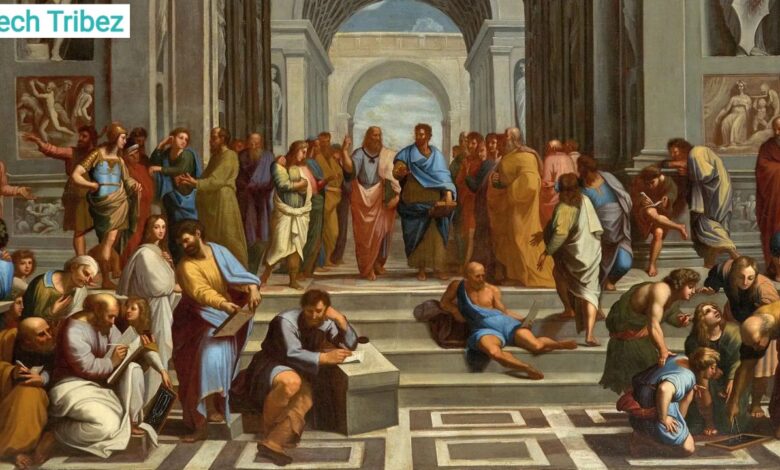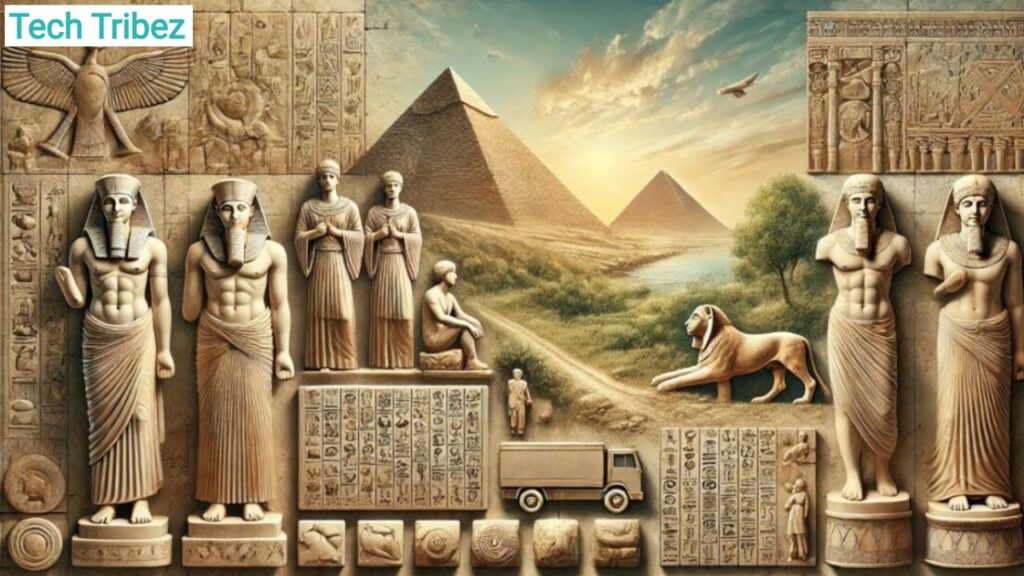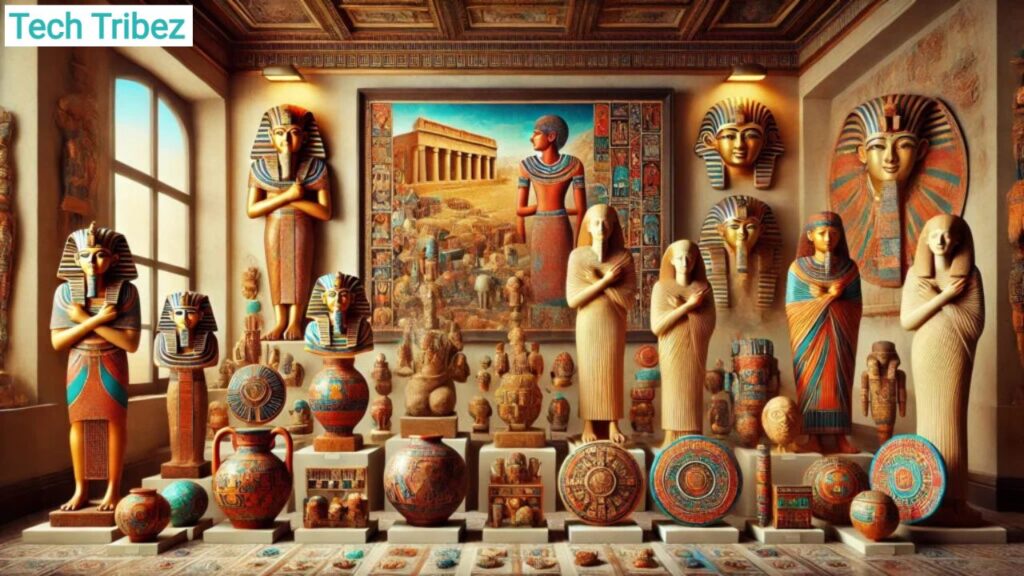Ancient Artz: Exploring the Timeless Influence of Historic Art Forms on Modern Culture

Art of PrehistoricPrehistoric and Ancient Ages or Ancient Artz is the ArtworkArtworkArtwork that belongs to the historical epoch that includes the record of ArtworkArtworkArtwork made by Homo Sapiens across the Globe since the Paleolithic Age. These are arts that denote greatness in artwork, for example, through the pyramids of Egypt or even some ceramics of Greece that have general themes and depict a profound appreciation of art and adorning. Ancient Artz is not confined to museums and history; nowadays, it is seen in the designs, architecture, and technologies. This article looks into the fundamental facets of Ancient Artz in terms of prominent approaches and materials used, as well as present-day appreciation of the artwork of history that remains influential in today’s art marketplace.
What is Ancient Artz? A Look at Its Significance Across Cultures
Ancient Artz refers to a subject covering artworks from the prehistoric period to the early centuries AD. These artworks include sculpture, pottery, paintings, monumental structures, and cultural artifacts. For example, the drawings of living in the Lascaux caves found in France remind us that historiography was initially depicted in this manner, perhaps because of the craving to tell stories through pictures or graphics. Art in ancient Egypt was a religious act that served in tombs and temples to represent the gods and show the pharaohs the way to the afterlife. In Greek art, the body was emphasized, particularly in sculpture, with most artistic representations depicting gods and heroes as glamorous and perfect. These cultural outputs are not just beautifying the society but rather reflectors of the philosophical and societal systems of the time. This understanding can be attained if we analyze ancient art in different territories. In this way, one can see that people of ancient civilizations experienced similar things as the people of the modern world. The language of art does not know the difference in time.
Also Read: Master the Art of Dragon Drawing: Techniques, Styles, and Inspiration
The Techniques and Materials Behind Ancient Artz Masterpieces
Techniques and materials used in Ancient Artz vary, signifying that the ancient artisans worked with limited options but produced art that would seem incredibly complicated by today’s standards. Fresco could be cited as an example; it was widely used in the art of the Minos and Romans: the pigments were applied on wet plaster to achieve the images’ permanency. Mosaic art, trendy in Roman architecture, refers to a technique in which miniature pieces of stone, glass, or ceramic are set together to depict a picture from a distance. Pharaoh’s commissioned artwork and artisans’ artwork in ancient Egypt featured carved hieroglyphics and Bas-relief images to decorate temple walls. The ArtworkArtworkArtwork was created using Iron chisel-like tools. Pottery was an essential aspect of pottery and was evident in Greek Kraters with mythological stories. These materials included ochre, indigo, clay, gold, and precious stones. Far before their Availability regarding art was even considered, their cultural significance connected to life, culture, and strength was considered. As we know from the earlier unit, ancient artisans knew about the chemical composition required for their work and ground plants and minerals for color and hue. In mastery of Ancient Artz, one gets the impression that the artist understands the form and function of the material and techniques he uses to produce art that will endure time.
Iconic Art Forms in Ancient Cultures: Egypt, Greece, China, and Beyond
The great art pieces of different ancient civilizations are all different in that they are one of a kind in their context. However, they all depict power, spirituality, and beauty, his essential humanity. Egyptian art is full of religious overtones, from the gigantic mystical pyramids to the images of gods; it reflects the power and divine knowledge of the journey to the other world. The difference is that Greek art presupposes the best in the human being, and the Discobolus is an example of staggering athleticism. Chinese art supplied particular components, the most significant of which are calligraphy and silk painting, which combine nature with the meditations of Indian philosophy. Details of the superb architecture of China are shown through the Terracotta warriors constructed to protect Emperor Qin Shi Huang in the afterlife. The Mesoamerican Mayan people depicted objects and people in paintings that aimed at harmony with the cosmos and frequently depicted warriors. These different aesthetics provide examples of how Ancient Artz was employed for this or that purpose—to share man’s accomplishments triumphantly or to contact the divine sphere. Analyzing such forms can show how historical cultures portrayed essential experiences to enhance the interpreter’s comprehension of art and its variety.
The Role of Ancient Artz in Religion and Rituals

Religion, rituals, iconography, and symbols were part and parcel of the Artz of the ancients because they were an interface between the mortal and divine. Relief was also used liberally at the temples or tombs of some icons like gods, goddesses, and pharaohs, who were regarded as gods on Earth. The significance of these pictures was assumed to be religious: these artifacts served as guides in the after-world. In the same way, in ancient Greece, people also used temples and shrines to display statues; the artiaartistas who produced life-life-sizes cha needed the locations in the gods’ domains. The Hindu art in the old age of India also focused on such issues. He depicted gods in various architectural carvings in temples to narrate stories regarding virtuous life and cosmological order. To Confucianism and Daoism in China, art was instrumental, and it included paintings and calligraphy, which were a way of honoring ancestors and balancing the spirit. These art forms were not just for embellishment. Still, they were considered to have some symbolic and ceremonial significance and were thus utilized during rites to call upon divine interventions to ensure cosmic harmony. This is evident in Ancient Artz, where art was used to depict the religious ways of the ancient people in their art for worship and beliefs.
Symbolism and Storytelling in Ancient Artz: From Myth to Realism
Artz in antiquity was a very effective means of communication, and artists identified themselves with certain symbols to pass ethos, myths, history, and philosophy. Ancient Egyptian screws on the walls painted the journey of the soul, and features such as the ankh, denoting life, and the scarab signifying rebirth, were used. The pottery produced by Greeks depicted myths, such as the fight and the accomplishments of the famous hero Heracles, and the images were etched to the best detail to tell a lasting story of gods and men. Ceramic decorations in ancient Mayan buildings included painted ceremonies and beings and the movement of colors and patterns imitating celestial bodies. Chinese art valued, to a significant extent, symbolism, and the two figures of harmony and wisdom incorporated such aids as dragons to represent power and protection. These symbols made it possible for artists to express prominent stories through painting, and these artworks painted what was real, intermingling it with what was legendary. From Ancient Artz, societies could display their records in histories and beliefs, among other aspects that could not be clearly expressed through language. Thus, the audience of the scores of the ancient times can get a more profound insight into the world view of those societies.
How Ancient Artz Influences Modern Design and Architecture
This is still evident in today’s works because contemporary designers and architects borrow elements of features from prehistoric works of art. Today, public buildings, museums, and government structures have mostly symmetrical and geometric patterns, as observed in the ancient Greeks and Romans. Most of the ancient Egyptian motifs, like the use of obelisks, are present in recent memorials or decorative arts. Today, architects use features such as Roman arches and aqueducts and incorporate them into constructions that provide esthetic and functional values. Also, limited color and unity of vision inspire modern interiors rooted in Chinese and Japanese ArtworkArtworkArtwork. Current artists and designers employ ancient practices, such as the style, mosaic, or fresco painting, to create patterns or historical interest in today’s fabric. This combination shows society that although the business is old, its services are still relevant. They enable architects and artists to design spaces and forms that connect to the past and the present.
Collecting Ancient Artz: Tips for Authenticity and Preservation

Ancient Artz Collecting is undoubtedly an enriching hobby that links the collector to the past. Still, much thought has to be given to the originality of the collected pieces and conservation methods. Any collector preparing to buy different types of art should familiarize themselves with the purchase of these products and their history and cultural background. It is possible to work only with well-established dealers and at auctions to check the documents confirming the origin of each work. Conservation is another factor; most archaeological relics are wrought, and wrong handling may compound the problem. These were scanned in optimum climate control conditions, adequate lighting, and handling, as are other art pieces. Consequently, collectors are encouraged to consult with the experts and attend, for example, workshops on artifact preservation. Saying ‘keep it alive,’’ collectors ensure that Ancient Artz can remain preserved for future generations, and we hope to learn from them.
The Legacy of Ancient Artz Artists: Phidias, Thutmose, and More
Legendary artists that have defined the earliest art history are characteristically identified in Ancient Artz. Phidias, a sculptor of ancient Greece, decorated the Parthenon and morphed the representation of wisdom and strength, and the massive statue of Athena is his masterpiece. In Egypt, Thutmose made the famous bust of Queen Nefertiti, providing one of the most beautiful faces in history and reminding everyone of theories that are correct to rule. Zhang Daqian, an artist in ancient China, added an innovative concept to ink painting and expanded cultural discursive possibilities for the subsequent generations of artists. The following authors not only participated in the appearance of their epoch but also overcame its limits and contributed to producing masterpieces that are admired at present. From the lessons learned from these two legends, we find how Ancient Artz inspired many of today’s artistic expressions and how different civilizations overcame times and space through art as a universal language that reflected beauty, authority, and spirituality in its works.
Understanding Ancient Artz Through Archaeological Discoveries

Anthropological excavations are invaluable in understanding the mysteries hidden in Ancient Artz, especially revealing the standards of living, their religious faith, and their achievements in technology and engineering. Iron artifacts such as delicately made tomb paintings and jewelry are other examples from Egypt, displaying the Egyptians” obsession with the afterlife. Er Qin, discovered near Xi’an, offers an insight into the Qin Dynasty’s military might and the emperor’s place in society. In Greece, actual sculptures and pottery buried show a picture of that ancient society based on mythology and everyday activities. These are all recorded academically and are helpful to historians and archaeologists in recreating ancient stories. Subheading 1: Reshaping Economic Future through Modern Technology [10 sub points]; Utmost Importance to Digital Economy; Global Economy facing up to Technological Progress; Words, Icons & Computer Codes; Information Technology Forms the Base of Contemporary Economy; 3D scanning; Human Assets; Staying Ahead of the Laser Cutter; Laser Cutting Promises a Faster, Better, ….. Here is how you can write 200 words for each subheading. Each section may be expanded to delve deeper into Ancient Artz in any way discussed.
Conclusion
Brief on the timelessness of Ancient Artz, focusing of Ancient Artz, focusing on the ability to introduce the current generation to cultural and creative artworks. Emphasize how Ancient Artz also acts as inspiration and as a link between different generations.
(FAQ’s)
What is Ancient Artz?
Ancient Artz involves excellent pieces of art that were created by ancient civilizations. These may include sculptures, paints, pottery, jewelry, and great architecture. These creations give information about ancient societies, cultural perceptions, and general practices.
Why is Ancient Artz important?
From a cultural perspective, Ancient Artz plays an essential role in human development’s entire history: it is only with its help that contemporary viewers can get familiar with some other cultures. It offers a glimpse into historical societies’ social, political, and spiritual lives and informs current art and design.
What are some famous examples of Ancient Artz?
Some of these are the Egyptian Pyramids, the Greek Parthenon, the Roman Colosseum, the Terracotta soldiers of China, and Mayan stoneworks. Thus, each one embodied that civilization’s beliefs, spiritual destiny, and technological achievement.
How did ancient artists create large sculptures and buildings?
With essential tools, often very creative approaches, and muscle power, the ancients constructed things like pyramids and temples. Some were ramps used for elevating, and pulleys were used in construction, as seen in giants such as pyramids in Egypt and structures in Rome.
How has Ancient Artz influenced modern art?
A review of today’s art reveals that principles of culture and prehistoric art trends have affected today’s art styles. Modern artists copied from these early forms and artworks today integrate ancient motifs, naturalism, and proportions in the current art and architectural works.



